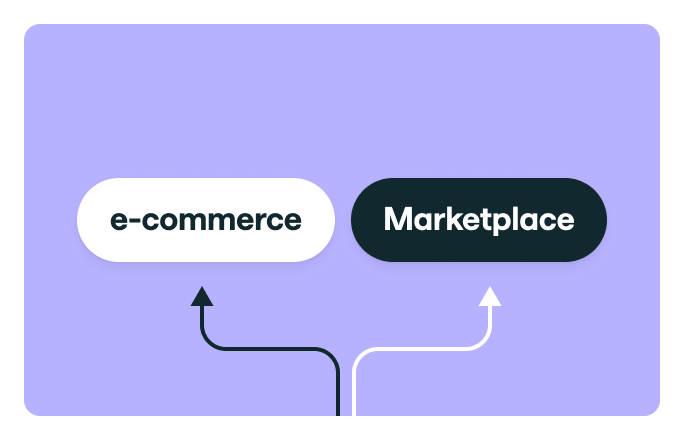How to prevent return fraud with machine learning models
Discover how you can detect and prevent return fraud with advanced fraud solutions backed up by machine learning models.


There isn’t much that surprises us anymore when cybercriminals attempt to defraud e-commerce platforms and their customers. With global fraud rates rising, social engineering scams, account takeovers (ATO), etc., are evident in the criminal underworld. The need for threat awareness has never been greater.
However, diligence doesn’t just apply to customers - platforms, too, are lagging behind in fraud prevention. Perhaps unsurprisingly, with ineffective internal policies and anti-fraud measures in place, cybercriminals and even dishonest customers have noticed and are prepared to take advantage.
Return fraud - abuse of return policies - is a tried and tested method that has seen a sharp increase of late. This can be costly to merchants, but prevention lies in the use of machine learning (ML) based fraud detection. The solution is available, and adopting it need not be a leap of faith for merchants. We explain why.
The rising costs of return fraud
Merchants and platforms around the world have reported that they have seen an increase in return abuse. As reported by Forbes, return fraud has expanded into a staggering USD 101 billion issue, where about 13.7% of all returns in 2023 were fraudulent. Likewise, e-commerce platforms indicated they had suffered lost revenues of USD 22.8 billion in 2022 alone, due to return fraud. For every USD 100 worth of returned merchandise accepted, e-commerce platforms lost USD 10.40 to return fraud. Such figures can be tear-inducing for e-commerce platforms and without adequate responses, can lead to an increase in the problem, or worse, a knee-jerk reaction from merchants trying to stamp out this and other forms of fraud affecting their businesses. Such measures may do more harm than good, as we will explain shortly. But first, what impact can return fraud have on a company?
- An increase in operational costs for processing, shipping, and restocking (shipping the item to the customer, reverse logistics of regaining and managing the returned items)
- Loss of physical goods due to item wear & tear.
- Manual returns processes require growing staff headcount and operating expenses.
- Genuine customers can be left with a limited choice of inventory.
- Lower customer retention & lifetime value due to restrictive returns policy.
The immediate costs to a company initially revolve around the standard procedures of items being returned, processed, shipped, potentially disposing of goods if they are no longer viable for reuse due to damage etc. Our main concern is with the internal policies a company may adopt to combat return fraud - ineffective responses can lead to a poor customer experience (UX), which in itself can impact a company’s reputation, retention rates and potential revenue growth.
Types of return fraud and how merchants currently tackle the problem

Fraudsters and dishonest customers are using tried and tested methods (now in the online domain), in order to make financial gains at the expense of merchants. To tackle this problem, many businesses have chosen a number of methods to limit their impact. Such measures include:
- Limiting returns eligibility
- Restricting refund policy
- Stricter inspection process for returned items
- Manual reviews and investigation
- Limiting reimbursement policy
- Rules-based anti-fraud tools
- Managing a customer blacklist
Unfortunately, the majority of these measures often come at the expense of a positive customer experience and have a major impact on sales growth. Denying or limiting refunds in the digital age where customer focus is at the forefront of a positive UX, eCommerce shoppers can simply purchase goods through another online store.
One negative experience can be damaging enough, but having permanent and unfavorable return policies in place can do more harm in the long run with customers unlikely to return if they feel they’ve had a poor UX, especially when they can find better options elsewhere.
There are, of course, other internal company decisions that are made regarding how to deal with return fraud. Manual reviews for returns can be performed, but often, merchants will base this on rule-based anti-fraud management, which lacks automation, and crucially, accurate real-time decisions.
Rules will often focus on a set list of behaviors, adding users to a blacklist, however, this will not accurately identify serial abusers who make efforts to hide their tracks. The result is a slow and ineffective list of procedures that require more staff to monitor manual reviews and some refund fraud attempts may slip through the net. There is a much more efficient way to tackle return fraud.
AI/ML models provide the perfect return fraud solution
Staggeringly, despite the rising costs of return fraud, only 3% of merchants use advanced machine learning solutions to combat the problem. As always, there is never just one reason for such a state of affairs. Merchants must weigh up the costs and benefits of implementing payment processes that may cause negative customer experiences at the checkout through intrusive authentication methods (checkout friction). Trying to maintain the payment process is one potential obstacle, but the customer care element at times outdoes any effective fraud measures. Many merchants appear to be unaware that they can ensure frictionless checkout experiences without limiting their anti-fraud capabilities.
The best way forward is to improve internal company policies, however, this process can be complemented by the use of an advanced fraud solution that can determine genuine users from fraudsters and dishonest customers. This is where the benefits of digital profiling and behavioral biometrics come into play, where a deep understanding of every single user behind payments and returns is gained, all backed up by AI/ML models that can perform the task of scanning thousands of pieces of data automatically and in real-time, completely unseen by users. In one online luxury marketplace example, from a sample of 330,000 transactions, of which 7,000 were refunds (spanning 8 months), Mangopay's ML model was able to prevent up to 60% of fraud, rejecting only 2% of the most suspicious transactions - saving the company USD 3M.
The benefits of using ML models are huge and so impactful on a company’s potential continued sales growth and customer success that listing them is necessary:
- Manual reviews are kept to a minimum, limiting operational costs.
- Fraud actors can be distinguished from genuine customers in real time.
- Dishonest customers trying to use multiple accounts can be identified in real time.
- Advanced anti-fraud measures can limit the need for restrictive return policies, improving the customer UX.
- A smooth transaction is ensured to maintain the customer UX without limiting anti-fraud capabilities.
If you are interested in this topic and you wish to combat return fraud effectively with an advanced fraud management solution, get in touch with us.


